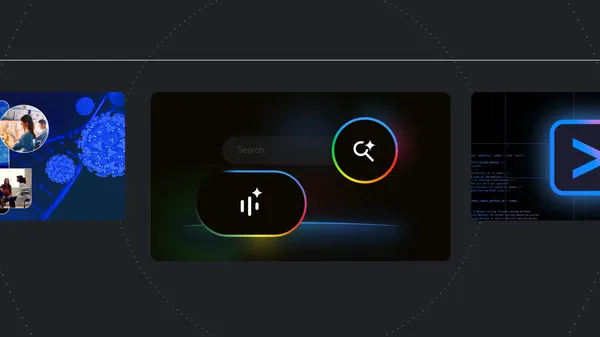 Here are Google’s latest AI updates from June 2025
Here are Google’s latest AI updates from June 2025
The latest AI news we announced in June
 Here are Google’s latest AI updates from June 2025
Here are Google’s latest AI updates from June 2025
 Here are Google’s latest AI updates from June 2025
Here are Google’s latest AI updates from June 2025
 We partnered with Darren Aronofsky, Eliza McNitt and a team of more than 200 to make ANCESTRA.
We partnered with Darren Aronofsky, Eliza McNitt and a team of more than 200 to make ANCESTRA.
 We partnered with Darren Aronofsky, Eliza McNitt and a team of more than 200 to make ANCESTRA.
We partnered with Darren Aronofsky, Eliza McNitt and a team of more than 200 to make ANCESTRA.
 We partnered with Darren Aronofsky, Eliza McNitt and a team of more than 200 to make ANCESTRA.
We partnered with Darren Aronofsky, Eliza McNitt and a team of more than 200 to make ANCESTRA.
 We partnered with Darren Aronofsky, Eliza McNitt and a team of more than 200 to make ANCESTRA.
We partnered with Darren Aronofsky, Eliza McNitt and a team of more than 200 to make ANCESTRA.
 We partnered with Darren Aronofsky, Eliza McNitt and a team of more than 200 to make ANCESTRA.
We partnered with Darren Aronofsky, Eliza McNitt and a team of more than 200 to make ANCESTRA.
 We partnered with Darren Aronofsky, Eliza McNitt and a team of more than 200 to make ANCESTRA.
We partnered with Darren Aronofsky, Eliza McNitt and a team of more than 200 to make ANCESTRA.
 We partnered with Darren Aronofsky, Eliza McNitt and a team of more than 200 to make ANCESTRA.
We partnered with Darren Aronofsky, Eliza McNitt and a team of more than 200 to make ANCESTRA.
 We partnered with Darren Aronofsky, Eliza McNitt and a team of more than 200 to make ANCESTRA.
We partnered with Darren Aronofsky, Eliza McNitt and a team of more than 200 to make ANCESTRA.
 We partnered with Darren Aronofsky, Eliza McNitt and a team of more than 200 to make ANCESTRA.
We partnered with Darren Aronofsky, Eliza McNitt and a team of more than 200 to make ANCESTRA.